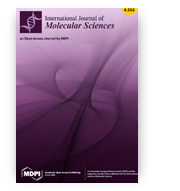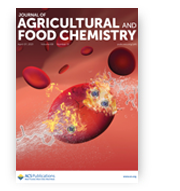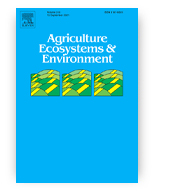C-Terminal Fragment of Vitellogenin II, a Potential Yolkin Polypeptide Complex Precursor Protein—Heterologous Expression, Purification, and Immunoregulatory Activity
Agnieszka Szmyt, Agnieszka Zabłocka, Józefa Macała, Józefa Chrzanowska, Anna Dąbrowska
International Journal of Molecular Sciences
 The aim of this research was to analyze the heterologous expression, purification, and immunoregulatory activity of recombinant YGP40 (rYGP40), the potential precursor of the yolkin peptide complex. The ygp40 coding sequence was codon optimized, successfully expressed in the E. coli system, and purified from inclusion bodies with a yield of about 1.1 mg/L of culture. This study showed that the protein exhibits immunomodulatory activity, expressed by the stimulation of TNF-α and IL-10 production and nitric oxide induction at a level comparable to that of the natural yolkin peptide complex obtained by other authors from hen egg yolk. At the highest dose of 100 µg/mL, rYGP40 also caused the up-regulation of iNOS expression in murine bone marrow-derived macrophages (BMDM). Moreover, no cytotoxic effects of rYGP40 on the BMDM cell line were observed.
The aim of this research was to analyze the heterologous expression, purification, and immunoregulatory activity of recombinant YGP40 (rYGP40), the potential precursor of the yolkin peptide complex. The ygp40 coding sequence was codon optimized, successfully expressed in the E. coli system, and purified from inclusion bodies with a yield of about 1.1 mg/L of culture. This study showed that the protein exhibits immunomodulatory activity, expressed by the stimulation of TNF-α and IL-10 production and nitric oxide induction at a level comparable to that of the natural yolkin peptide complex obtained by other authors from hen egg yolk. At the highest dose of 100 µg/mL, rYGP40 also caused the up-regulation of iNOS expression in murine bone marrow-derived macrophages (BMDM). Moreover, no cytotoxic effects of rYGP40 on the BMDM cell line were observed.
DOI: 10.3390/ijms22137223
The Contribution of Sub-Aleurone Cells to Wheat Endosperm Protein Content and Gradient Is Dependent on Cultivar and N-Fertilization Level
Wisse Hermans, Selime Mutlu, Adam Michalski, Niels A. Langenaeken, Christophe M. Courtin
Journal of Agricultural and Food Chemistry
 The proteins in the starchy endosperm of wheat determine wheat quality and exhibit a quantitative gradient decreasing from the outer to inner endosperm. Here, we investigate how protein-rich sub-aleurone cells contribute to the protein content and gradient by studying three cultivars, each cultivated at three levels of nitrogen (N)-fertilization. The observed increased protein content with increased N-fertilization was cultivar-dependent. Image analysis showed that the underlying protein gradient could be described by a declining biexponential curve, with protein contents up to 32.0% in the sub-aleurone. Cultivars did not differ in protein content in the center of the cheeks and only differed in the outer endosperm when N-fertilization is applied. N-Fertilization resulted in relatively higher increases in protein content in the outer compared to inner endosperm. Hence, sub-aleurone cells could affect the classification of cultivars by baking quality. Cultivar selection and N-fertilization could furthermore be promising techniques to produce protein-rich miller’s bran.
The proteins in the starchy endosperm of wheat determine wheat quality and exhibit a quantitative gradient decreasing from the outer to inner endosperm. Here, we investigate how protein-rich sub-aleurone cells contribute to the protein content and gradient by studying three cultivars, each cultivated at three levels of nitrogen (N)-fertilization. The observed increased protein content with increased N-fertilization was cultivar-dependent. Image analysis showed that the underlying protein gradient could be described by a declining biexponential curve, with protein contents up to 32.0% in the sub-aleurone. Cultivars did not differ in protein content in the center of the cheeks and only differed in the outer endosperm when N-fertilization is applied. N-Fertilization resulted in relatively higher increases in protein content in the outer compared to inner endosperm. Hence, sub-aleurone cells could affect the classification of cultivars by baking quality. Cultivar selection and N-fertilization could furthermore be promising techniques to produce protein-rich miller’s bran.
DOI:10.1021/acs.jafc.1c01279
Changes in the soil hydrophobicity and structure of humic substances in sandy soil taken out of cultivation
Lilla Mielnik, Edyta Hawelke, Jerzy Weber, Lidia Oktaba, Jerzy Jonczak, Marek Podlasiński
Agriculture Ecosystems & Environment
 The aim of the research was to determine how abandoning agricultural land affects soil hydrophobicity and humic substances structure, with a special emphasis on fluorescent properties. Arable and abandoned sandy soils in central Poland were investigated from May to December of a very dry year. The investigations conducted indicated that land use influences the direction of the soil organic matter (SOM) humification process, causing changes in the functional properties of the soil. Taking sandy soil out of cultivation and its spontaneous afforestation resulted in a significant decrease of moisture in the surface layer of the abandoned soil. The change in water regime influenced the direction of SOM transformation, but a period of 30 years was not long enough to cause changes in the elemental and/or fractional composition of humic substances. Nevertheless, the modified conditions of SOM transformation resulted in a marked increase in soil hydrophobicity. Fluorescence investigation proved the predominance of simpler fulvic-like structures in humic acid (HA) extracted from the abandoned soil, which indicated a relatively low molecular weight or a smaller number of chromophores with conjugated double bonds, and a lower humification degree of HA. Obtained results showed that fluorescence spectroscopy can be successfully used as a sensitive technique for the qualitative characterisation of the structures of humic substances transformed under different environmental conditions.
The aim of the research was to determine how abandoning agricultural land affects soil hydrophobicity and humic substances structure, with a special emphasis on fluorescent properties. Arable and abandoned sandy soils in central Poland were investigated from May to December of a very dry year. The investigations conducted indicated that land use influences the direction of the soil organic matter (SOM) humification process, causing changes in the functional properties of the soil. Taking sandy soil out of cultivation and its spontaneous afforestation resulted in a significant decrease of moisture in the surface layer of the abandoned soil. The change in water regime influenced the direction of SOM transformation, but a period of 30 years was not long enough to cause changes in the elemental and/or fractional composition of humic substances. Nevertheless, the modified conditions of SOM transformation resulted in a marked increase in soil hydrophobicity. Fluorescence investigation proved the predominance of simpler fulvic-like structures in humic acid (HA) extracted from the abandoned soil, which indicated a relatively low molecular weight or a smaller number of chromophores with conjugated double bonds, and a lower humification degree of HA. Obtained results showed that fluorescence spectroscopy can be successfully used as a sensitive technique for the qualitative characterisation of the structures of humic substances transformed under different environmental conditions.
DOI:10.1016/j.agee.2021.107554









